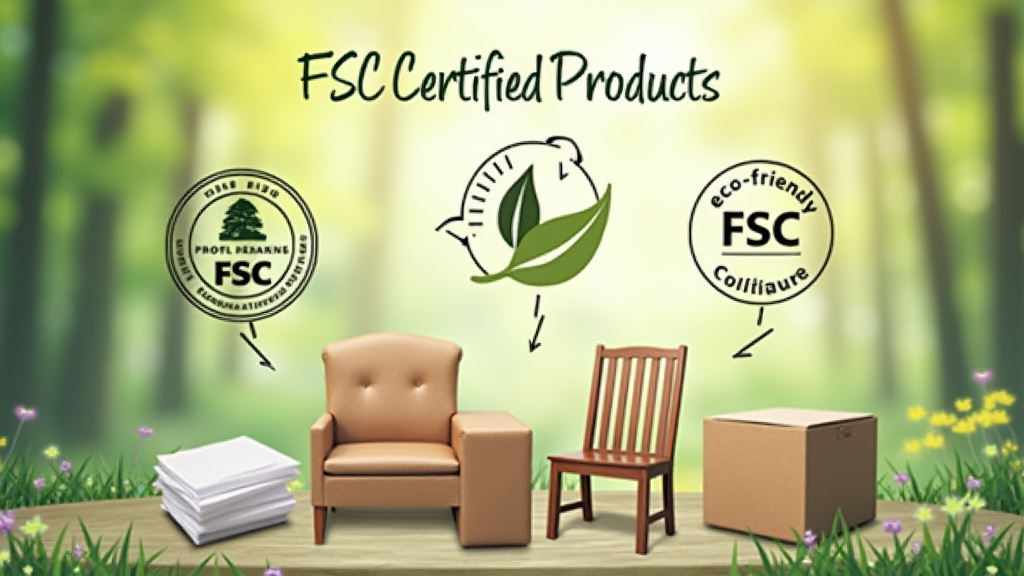FSC Certifications play a crucial role in promoting sustainable forestry practices worldwide. These certifications, issued by the Forest Stewardship Council, indicate that products such as paper, wood furniture, and eco-friendly packaging come from responsibly managed forests. By ensuring that forest management meets rigorous environmental and social standards, FSC certified products help combat deforestation and promote biodiversity. Consumers looking to make eco-conscious choices can easily identify these products through FSC labels, which signify a commitment to sustainable practices throughout the supply chain. Understanding FSC Certifications is essential for anyone interested in supporting sustainable forestry and protecting our planet’s vital forest resources.
When we talk about eco-labels and responsible forest management, FSC Certifications emerge as a beacon of hope for sustainable practices in the timber industry. These certifications guarantee that the materials used in various products, such as biodegradable packaging and wooden furniture, are sourced from well-managed forests that prioritize ecological health and social equity. By tracking the origin of these materials through chain of custody certification, consumers can ensure that their purchases align with their values. With increasing awareness around climate change and deforestation, understanding these certifications is key for those seeking to contribute to environmental conservation through their buying decisions.
Understanding FSC Certifications and Their Importance
FSC certifications, or Forest Stewardship Council certifications, signify that the products bearing this label come from responsibly managed forests. This means that the harvesting of these resources is conducted in a way that prioritizes the well-being of the environment, the rights of indigenous peoples, and social equity. By choosing FSC certified products, consumers are making a conscious choice to support sustainable forestry practices. This is particularly crucial in the fight against deforestation and climate change, as responsibly managed forests play a vital role in carbon sequestration.
Moreover, FSC certifications help promote sustainable forestry by ensuring that forest management practices adhere to strict environmental standards. These standards include maintaining biodiversity, protecting water resources, and ensuring fair treatment of workers. By supporting FSC certified products, consumers contribute to a market that values sustainability and ethical practices, thereby encouraging more companies to adopt eco-friendly policies and certifications.
Frequently Asked Questions
What does FSC certification mean for products?
FSC certification indicates that a product, such as paper or wooden furniture, comes from responsibly managed forests that adhere to high environmental and social standards. This certification helps combat deforestation and promotes sustainable forestry practices.
How does the Forest Stewardship Council (FSC) ensure sustainability in forestry?
The FSC ensures sustainability in forestry by establishing strict criteria for forest management, which includes protecting biodiversity, ensuring the rights of Indigenous peoples, and maintaining ecosystem services. These guidelines help manage forests responsibly and sustainably.
What are the types of FSC certifications available?
There are three main types of FSC certifications: Forest Management Certification, which ensures sustainable forestry practices; Chain of Custody Certification, which tracks the journey of wood products from forest to final product; and Controlled Wood Certification, which allows for the mixing of certified and non-certified wood from low-risk sources.
What products can be FSC certified?
A variety of products can be FSC certified, including paper products, packaging materials, wooden furniture, sports equipment, clothing, and even tires. The certification helps consumers identify eco-friendly options that support sustainable forestry.
How can I identify FSC certified products in stores?
You can identify FSC certified products by looking for the FSC label on the packaging. There are three types of labels: FSC 100%, which means the product is made entirely from FSC-certified materials; FSC recycled, which is made from 100% recycled materials; and FSC mixed, indicating a combination of certified and recycled materials.
Why is chain of custody certification important for FSC products?
Chain of Custody certification is important because it tracks the flow of FSC certified materials through the supply chain, ensuring that the final products are genuinely sourced from responsibly managed forests. This transparency helps consumers trust that they are making eco-friendly choices.
What are the environmental benefits of choosing FSC certified products?
Choosing FSC certified products supports sustainable forestry practices that help preserve biodiversity, protect water resources, and mitigate climate change impacts. This certification contributes to reducing carbon emissions linked to deforestation.
How does FSC certification impact local communities?
FSC certification positively impacts local communities by promoting social benefits, such as the rights of Indigenous peoples, fair wages for workers, and improved economic viability through sustainable forest management practices.
What is the significance of controlled wood certification within the FSC framework?
Controlled wood certification ensures that non-certified wood used in products comes from low-risk sources, thereby preventing the inclusion of illegally harvested or environmentally damaging materials. This certification helps maintain the integrity of sustainable forestry.
What steps can consumers take to support sustainable forestry practices?
Consumers can support sustainable forestry practices by choosing FSC certified products, recycling paper, reducing beef consumption, and supporting brands that prioritize eco-friendly packaging and sustainable materials.
| Key Points | Details |
|---|---|
| What is FSC Certification? | FSC Certification signifies that a product comes from responsibly managed forests that meet strict environmental and social standards. |
| Types of FSC Certifications | 1. Forest Management Certification 2. Chain of Custody Certification 3. Controlled Wood Certification |
| Importance of FSC Certifications | FSC Certifications help combat deforestation, protect biodiversity, and promote sustainable forest management practices. |
| FSC Labels Explained | 1. FSC 100%: All materials from FSC-certified forests. 2. FSC Recycled: Made from 100% recycled materials. 3. FSC Mixed: A mix of FSC-certified, recycled, and controlled wood materials. |
| Products That Can Be FSC Certified | Common products include paper, furniture, packaging, clothing, and sports equipment. |
Summary
FSC Certifications are essential for ensuring sustainable forestry practices that benefit both the environment and communities. By choosing products with FSC Certifications, consumers can support responsible forest management and help mitigate the effects of climate change. Understanding what FSC Certifications entail can guide purchasing decisions towards products that are both eco-friendly and socially responsible.


